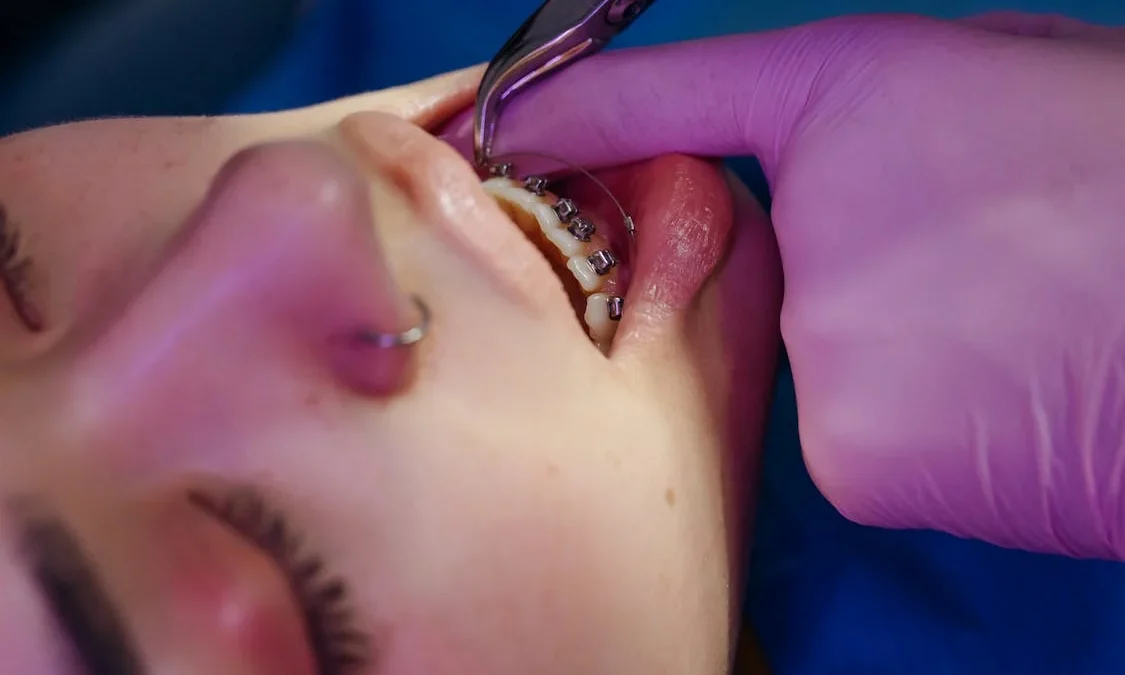
Different Wisdom Teeth Impactions: Signs, Causes, and Risks
January 6, 2025
Hidden Headaches: When a Wisdom Tooth Sparks Sinus Misery
March 26, 2025
Table of Contents
ToggleEver felt a strange pressure at the back of your mouth? Those third molars, often called wisdom teeth, show up during late teens or early adulthood. Some people don’t notice them at all. Others experience crowding, pain, or gum infections. Many folks wonder if wisdom teeth clash with braces. Some worry that removing them might be a must. Others think these late arrivals could ruin months of orthodontic effort. This guide shines a light on how wisdom teeth and braces interact. It covers reasons for extraction, the role of retainers, and ways to keep teeth in line. No fluff here. Let’s jump straight into the nuts and bolts.
What Are Wisdom Teeth?
These teeth sit behind your second molars. They sometimes pop up between age 17 and 25. In past centuries, they helped chew coarse foods. Over time, jaws got smaller. So a few folks lack space for all four wisdom teeth. A handful have no complications. Others face partial eruptions or angles that nudge neighboring teeth. X-rays help spot if they’re developing properly or if they’re impacted. Dentists track them for signs of trouble. Pain, redness, or repeated swelling might mean they should go. It’s not an automatic decision. There’s always an evaluation of potential risks and benefits. Some people prefer to leave them if they cause no harm.
Why Do They Matter With Braces?
Braces realign teeth with gentle force over many months. Each tooth shifts into a neater position. An incoming wisdom tooth can add fresh pressure. It may push teeth out of place, sparking fear that all the effort with braces might vanish. The good news is that retainers often hold front teeth in position. A single wisdom tooth usually can’t overpower that. Still, if the molar emerges at an odd angle, it could crowd the second molar or cause pain. Orthodontists watch for these changes. Some recommend removing wisdom teeth before braces if crowding is inevitable. Others keep an eye on them during treatment. The plan often shifts based on each person’s jaw structure and overall oral health.
Reasons for Removal
Dentists don’t schedule extractions for no reason. They look for problems that could escalate. One typical reason is recurring infection, often known as pericoronitis. That’s when a gum flap covers part of the tooth, trapping food and bacteria. Another cause is decay on the wisdom tooth or the second molar next to it. Sometimes a cyst or similar issue develops around a partially erupted tooth. That can damage bone or roots. Pain that won’t settle is a red flag too. Some folks notice a dull ache that doesn’t go away. In such cases, extraction can prevent bigger headaches. Many people question the impact on braces. Experts may coordinate timings to reduce disruptions. It could happen before braces, during, or afterward, depending on the scenario.
Myth: They Always Need Extraction Before Braces
Many believe that all wisdom teeth must come out before getting braces. That’s not always accurate. Orthodontists check your jaw size, tooth positions, and X-rays to see if trouble is brewing. If space looks tight, removal can be smart. If there’s room for those molars to emerge without harm, your provider might hold off. Sometimes wisdom teeth stay hidden or grow straight without disturbing alignment. A few people even keep their third molars for life with zero issues. The real focus is on whether they complicate orthodontic goals. If there’s no crowding and no hint of infection, an immediate extraction may not be necessary. That said, it’s best to track them, since conditions can shift over time.
Can Braces Rescue an Impacted Wisdom Tooth?
Some impacted teeth can be nudged upright with braces. That works if there’s enough space and the tooth’s angle isn’t too severe. Your orthodontist might attach a small bracket and chain to guide it. This approach takes extra time and patience. Not everyone is a candidate. If the tooth is lodged at a tough angle, it may damage the second molar. Decay can flourish in hard-to-clean spots. In such cases, extraction is kinder than trying to move a tooth that’s stuck. Braces can still help the rest of your teeth, even if that impacted wisdom tooth must go. Many folks avoid major complications by teaming up with a skilled dental crew that includes both a dentist and an orthodontist.
Extraction During Braces
Some people remove wisdom teeth in the middle of orthodontic treatment. That’s not a problem. Dentists or oral surgeons coordinate with the orthodontist so brackets and wires don’t interfere. The process might involve a short pause in brace adjustments. Healing takes a bit of time, depending on how complex the extraction is. Pain relief, saltwater rinses, and a soft diet often ease recovery. Good cleaning is vital to prevent infection. Orthodontists resume treatment once healing is on track. This approach can save time if the wisdom tooth becomes problematic during active treatment. There’s no rule that says you must wait until the end of treatment. If finances are a worry, ask about affordable wisdom teeth removal Sydney packages.
Retainers and Wisdom Teeth
Once braces come off, retainers help teeth stay put. They’re the essential to maintain your new smile. If a wisdom tooth tries to erupt, the retainer can reduce minor shifts. People often feel slight pressure. That’s a sign to visit the dentist. X-rays might show if the molar is pushing on roots or poking in at an angle. Some folks remove the tooth if it threatens to undo the alignment. Others monitor if it’s coming in straight. Keep wearing that retainer as advised. Flossing around back teeth takes discipline, so be extra diligent in that area. Skipping retainer wear invites tooth movement, especially if a new molar is emerging. A little caution goes a long way.
Costs and Queries
Plenty of people search for transparent fees before deciding on removal. A big concern is how the wisdom teeth removal cost compares to the long-term benefit. Some check for a wisdom teeth removal price estimate through clinics or insurance. Others scout for methods that fit their budget. Searching for wisdom teeth removal near me often points to experts with experience. Payment plans or insurance coverage can ease the load for multiple extractions. A quick chat with a dentist or oral surgeon clarifies the potential fees. Health funds vary, so it’s wise to ask about gaps. Surprises aren’t fun when you’re dealing with a sore jaw.
Many folks seek wisdom teeth removal in Sydney options for dependable care. Others read up on Wisdom teeth Sydney tips to understand common causes of pain. Clear communication with a dentist guides the plan. The right choice depends on your jaw shape, dental history, and personal comfort. It’s your smile, and it’s worth protecting. Regular checkups and honest conversations bring peace of mind and a happy mouth.
